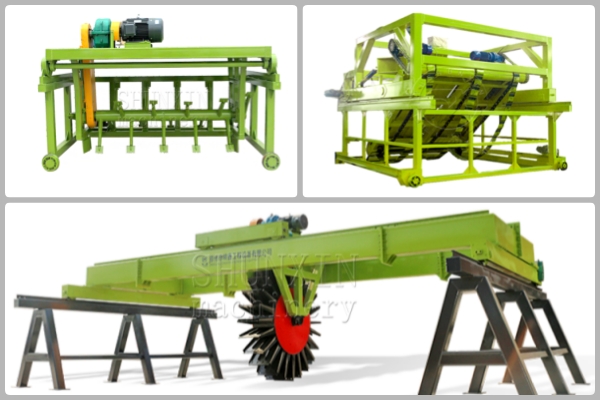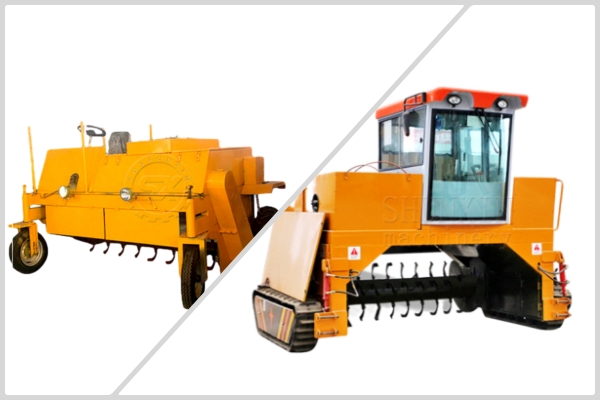
How to Compost Chicken Manure
Composting chicken manure is an excellent way to turn waste into a valuable soil amendment for your production. Proper composting helps to break down the manure, eliminate pathogens, and create nutrient-rich matters that enhances soil fertility. So here’s a simple guide on how to compost chicken manure.
Why So Many Fertilizer Suppliers Making Compost Chicken Manure for Their Business?
Chicken manure has the highest nutritional value among all conventional livestock manure. Similarly, it is currently the best raw material for manufacturing organic fertilizer.
Chicken manure is rich in organic matter after composting process, up to 50%. It also contains high NPK content fermented and trace elements, such as nitrogen accounted for 3.2%, phosphorus pentoxide (P2O5) for 3.1%, potassium oxide (K2O) is 2.4%, calcium for 5.0%, etc. Because the chicken intestine is too short in comparison to other livestock, the nutrients in the feed can only be absorbed about a third of it, and the rest is evacuated.
Therefore, chicken manure is a cheap low-energy protein feed. Replacing part of the protein feed with chicken manure and adding with some energy feed can greatly improve the economic benefits of livestock farming.
Similarly, chicken manure can be composted and fermented to produce high-quality organic or biological fertilizer. And it can reduce pollution, purify the environment, and form an ecological industrial chain, providing economic, ecological, and social benefits.
Why Do You Need to Compost Chicken Manure?
- 1
Chicken manure is a valuable resource after effective processing and utilization, otherwise it will become a serious source of environmental pollution.
- 2
Chicken manure contains a large number of germs, worm eggs and parasites, and uncomposted manure should not be applied directly to crops.
- 3
The process of composting chicken manure releases the majority of heat. If it is not composted and applied directly, it will burn the roots and seedlings of plants.
- 4
The nitrogen element in chicken dung begins as protein, which plants cannot absorb directly. Only after fermentation does the protein degrade into ammonia, which plants are likely to require.
Aerobic FermentationThe Best Technique for Composting Chicken Manure
The traditional method is to seal and compost chicken manure for anaerobic fermentation, which usually takes 3-4 months to complete. And this method has large occupation area, long fermentation cycle and a low degree of harmlessness.
Aerobic fermentation is an exothermic oxidation and decomposition process in the presence of good ventilation effect and well-oxygenated conditions. It usually occurs in biotechnology, and the decomposition speed is 10-20 times faster than the traditional way, with short fermentation cycle, high mechanization, big processing capacity, and a high degree of harmlessness.
Top 2 Compost Methods for Processing Chicken Manure


The main aerobic fermentation composting methods commonly used in industry are groove type and windrows composting systems.
If you want to standardize the composting of chicken manure to make organic fertilizer, we suggest that it is better to use the groove type aerobic fermentation technology. This is because it is easier to meet the requirements of harmlessness.
On the other hand, if you needn’t to treat chicken manure on a large scale, you can also use another method to do so.
This is the most effective way to treat chicken manure. Additionally, it is also suitable for commercialization and standardization of organic fertilizer production from chicken manure.
It totally decomposes chicken manure and converts organic matter into organic matter, carbon dioxide, and water by natural fermentation or injecting microorganisms.
This method has a short fermentation time, realize easily large scale production in factories, is not affected by weather and seasons, and causes less environmental pollution. Due to different equipment, the width can reach 3-30 meters , the depth is normally 0.8-3 meters, and the length is in the range of 50-100 meters. We can also design according to the requirement of customers.
Windrow composting fermentation spread the materials into rows and stack them in the open air or under a trellis.
Each row of materials is 2-3 meters wide and 1-2 meters high, while the length depends on the actual situation.
The mechanism can be equipped with or without instruments for controlling temperature and humidity.
This system has the advantage of allowing you to place materials closer to farmyard and no need for a dedicated plant.
However, the processing period is longer. When exposing in the open-air, it is more affected by the weather and seasons.
Conditions and Controlling Measures In Chicken Manure Compost Process You Should Know
What Can You Get After Composting Chicken Manure?







